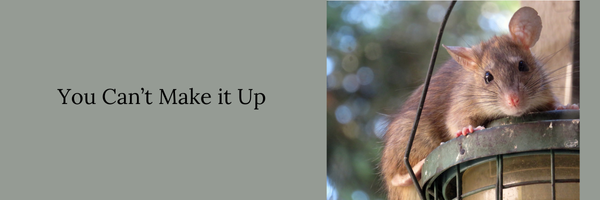Rats as Role Models?

If you’re a longtime subscriber to this newsletter, you may remember that I’ve mentioned some charming attributes of rats a time or two. For example, they giggle when they’re tickled, and they love to play hide and seek.
It seems I’m not the only one who has been charmed. Science magazine devoted an entire special section of its latest issue to rats. The reasons for the tribute went beyond their sense of humor and playfulness. Not only do rats love a good laugh, they’re also empathetic. Rats will comfort another rat in distress. A rat will help free a trapped rat without being trained to do so, even if it takes a lot of work to spring the trap. Rats are especially likely to take such actions if their trapped friend is upset. In short, rats are nice. If you spend much time on social media, you may be thinking that rats seem a lot nicer than the average human.
Of course, for scientists, this calls for some hard thinking about how they treat these animals when using them in experiments. But there might be food for thought here for the rest of us as well. I read and write about how delightful these animals are, but when I see one, I’m filled with revulsion. This may be down to evolutionary programming. Rats do carry some diseases (although I’m told rats are not as dangerous as we tend to think). But raccoons carry disease, too, and even though we don’t want raccoons raiding our garbage bins, we don’t shudder and gag when we seem them crawling out of one. We even think they’re cute. (Have you ever seen a baby raccoon?)
I have no idea what all this means. But I do think that as humans we would be wise to pay close attention to those instinctive responses, notice what we recoil from and why. It might help us become better humans. If we work hard at this, we might one day become as kind and empathetic as the average rat.
’til next time,
Avery
Photograph by Christine McCall via Pixabay